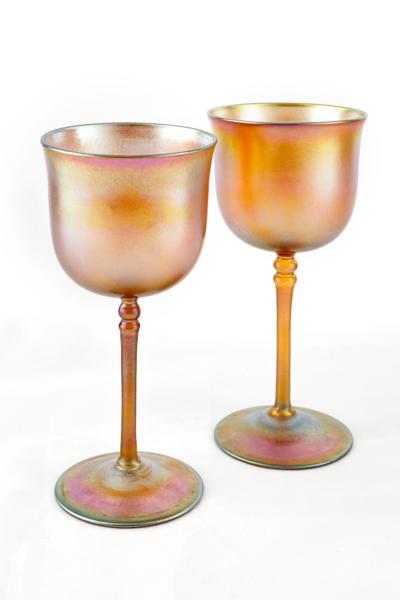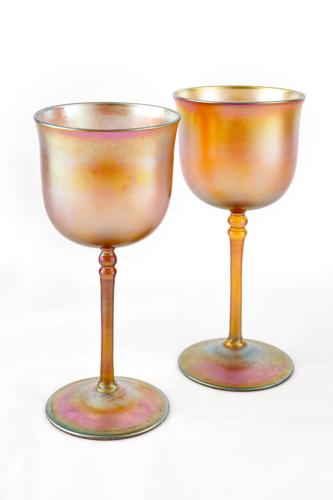In this series, Lagniappe presents works from the collection of the New Orleans Museum of Art, with commentary from a curator.
Introduced to the public in 1896 after more than a decade of experimentation, iridescent “Favrile” glass was a result of Louis Comfort Tiffany’s fascination with ancient glass.
Tiffany had already made his name as an interior designer and stained-glass maker before becoming known for this enormously popular style of turn-of-the-century glass.
After looking at thousands of works of ancient glass in museum collections and through his travels throughout the Middle East, Tiffany was drawn to Syrian and Roman glass because of its unique sheen and way of reacting with the light.
Because these ancient glasses had been underground for sometimes thousands of years, the glass became iridescent in a chemical reaction with the soil and minerals.
In order to replicate the rainbow shimmer of ancient glass, chemists working at New York’s Tiffany Studios mixed molten glass of various colors with a wide array of metallic oxides.
The eventual formula created by Tiffany’s glassmaker Arthur Nash was so highly guarded that not even Louis Comfort Tiffany himself was allowed to have access to it. A patent for the formula was issued in 1894 and it was named Favrile, in a nod to the Old English word, fabrile, meaning "hand-wrought."
Favrile glass was expensive, available only to the most wealthy of households. The soft pink iridescence and connection to ancient materials conveyed wealth and refined history, but also modernity.
These Louis Comfort Tiffany’s Favrile Glass goblets are on view at the New Orleans Museum of Art in an installation of 90 objects in the Café NOMA restaurant by Ralph Brennan.


